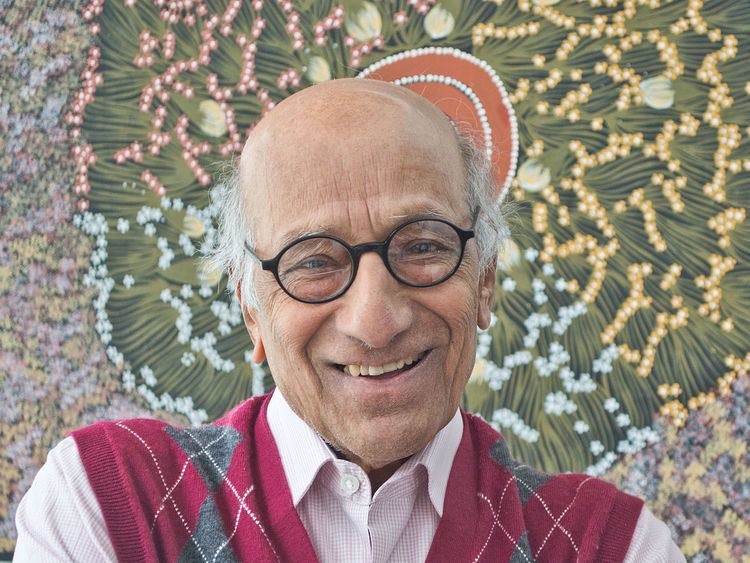Fields Theoretical physics Spouse Kashi Wali | Name Kameshwar Wali Role Professor Thesis 1959 | |
 | ||
Known for Symmetry properties of fundamental particles and their interactionsHistory of physics and physicists Books Chandra a biography of S. Chandrasekhar Alma mater University of Wisconsin-Madison, Banaras Hindu University | ||
Kameshwar C. Wali (born October 15, 1927) is the Distinguished Research Professor of Physics Emeritus at Syracuse University's College of Arts and Sciences. He is a specialist in high energy physics, particularly symmetries and dynamics of elementary particles, and as the author of Chandra: A Biography of S. Chandrasekhar and Cremona Violins: a physicist's quest for the secrets of Stradivari.
Contents
Early life and education
Wali was born at Bijapur in the state of Karnataka, India, in 1927. He was the seventh of ten children (three of whom died in infancy). His father, a civil servant in the British Colonial system, moved the family to Belgaum.
In 1944 Wali enrolled at the Raja Lakhamagouda Science Institute in Belgaum, newly founded by the Karnatak Lingayat Education Society (KLES) and inaugurated by the Sir C.V. Raman. He obtained his BSc with distinction in physics in 1948 and was appointed as a lecturer in physics at the college before going on, in 1950, to commence post-graduate studies at Banaras Hindu University (BHU). He received his MSc in physics in 1952, specializing in spectroscopy, and was appointed as a lecturer in the Science College.
Wali married Kashi Kulkarni in May 1952. She was a fellow student at BHU doing her MSc in physics.
While teaching, he pursued independent studies for an MA in mathematics and received it in 1954. He was awarded the Chancellor's Gold Medal—the University's highest honor.
In 1955 Wali travelled to the United States after being accepted into the PhD program in physics at the University of Wisconsin, Madison. His advisor and mentor was Robert G. Sachs, later the Associate Director of the High Energy Physics division at the Argonne National Laboratory. In 1959, Wali was joined in America by his wife and three daughters. Wali obtained his doctorate in 1959.
Career
Wali became a research associate at Johns Hopkins University in 1960. In 1962 he joined Argonne National Laboratory, Illinois, as an assistant scientist in the Physics Division. The following year he joined the newly created High Energy Physics division at Argonne as an associate scientist. In 1967 he was promoted to senior scientist. Concurrently he taught courses at Northwestern University (1964-1966) and at the University of Chicago (1967-1969). He was a visiting scientist at the International Center for Theoretical Physics, at Trieste, Italy (1967).
In 1969 Wali joined the faculty of the Syracuse University physics department as full professor, a position he held until his retirement in 1998. He served as chairman of the physics department from 1986 to 1989, and was named the J. Dorman Steele Professor at Syracuse in 1996. He was project director of the Elementary Particle Theory Group, DOE from 1969 to 1993. He has been on the International Advisory Committee for PASCOS (Particles, Strings and Cosmology) Conference since its inception in 1994. During his sabbatical leaves, he was visiting scientist at the Institut des Hautes Études Scientifiques (IHES), Bures-sur-Yvette, France (Fall 1971, 1975, 1979, 1983, and Spring 1990); associate of the physics department, Harvard University (from 1982); visiting scientist, University of Chicago (Summer 1985); Dozor Visiting Fellow, Ben-Gurion University of the Negev, Beer-Sheva, Israel (Jan-Feb, 1993); and senior scholar, Fulbright Foundation, Australia (Jan-May 1995). As a member of the United States and Vietnam Research Collaboration, Wali visited Hanoi in 1979 and 1989 for establishing research contacts and to present lectures.
Since retirement in 1998, he has been Distinguished Research Professor Emeritus at Syracuse University.
Research
His specific research contributions include:
Contributions to the history of physics
Wali is a founding member of the Forum on the History of Physics within the American Physical Society. He wrote the authoritative biography of the astrophysicist Subrahmanyan Chandrasekhar. Chandra: A Biography of S. Chandrasekhar (published in 1991 by The University of Chicago Press), complemented by subsequent articles and books on Chandra: S Chandrasekhar: The Man Behind The Legend, and A Quest for Perspectives: Selected Works of S Chandrasekhar. He also edited Chandrasekhar's scientific journals, which were published in A Scientific Autobiography, S Chandrasekhar (2010).
His other books include Cremona Violins: A Physicist's Quest for Secrets of Stradivari (ISBN 978-9812791108) and Satyendra Nath Bose—His Life and Times: Selected Works. (ISBN 978-9812790712)
